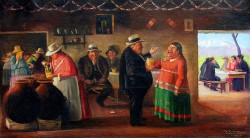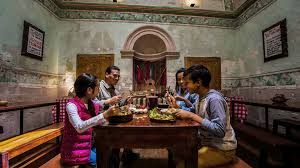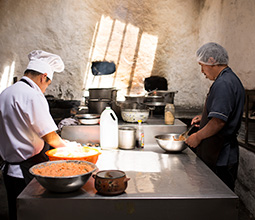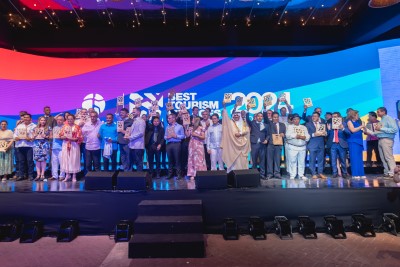The Picanterías of Arequipa: A Gastronomic and Cultural Heritage in the Heart of Peru
Arequipa, Peru’s second-largest city, often celebrated for its sumptuous white sillar architecture, is also renowned for its rich gastronomic heritage embodied by the picanterías, the traditional restaurants that are the beating heart of the region’s culinary culture. Recently highlighted by National Geographic as a potential new nerve centre of Peruvian gastronomy, Arequipa offers a palette of flavours that testifies to the depth of its cultural and gastronomic heritage.
Origins and evolution of picanterías

Credit: Sociedad Picantera De Arequipa
Picanterías date back to colonial times, in the 16th century to be precise, originally established as chicherías where chicha, a traditional drink made from fermented maize, was served. Over time, these places evolved to offer a wider range of typical dishes, in response to an order from the Viceroy of Peru Francisco de Toledo, which prohibited the sale of drinks without food. As a result, picanterías became places where people came not only to drink but also to enjoy hearty dishes, marking the beginning of a rich culinary tradition that continues to this day.
Picantera culture: More than a Gastronomy, a Way of Life

Credit: Eduardo Flores/PromPerú
In addition to their catering function, Arequipa’s picanterías are true bastions of local culture. They are often run and handed down by women, underlining their central role in preserving family culinary traditions. These establishments don’t just serve meals; they celebrate conviviality, community and history, making them places of living memory and cultural transmission.
Our article: Arequipa, Peru’s splendour and must-sees
Picantería Gastronomy: A Heritage Worth Preserving
 The dishes served in the picanterías reflect Arequipa’s agricultural diversity, making the most of local produce such as chilli varieties, maize and regional cheeses. Dishes such asadobo arequipeño, rocoto relleno and chupe de camarones are not only culinary specialities but also expressions of Arequipan identity. These recipes, handed down from generation to generation, are prepared using traditional techniques that add a historical dimension to every bite.
The dishes served in the picanterías reflect Arequipa’s agricultural diversity, making the most of local produce such as chilli varieties, maize and regional cheeses. Dishes such asadobo arequipeño, rocoto relleno and chupe de camarones are not only culinary specialities but also expressions of Arequipan identity. These recipes, handed down from generation to generation, are prepared using traditional techniques that add a historical dimension to every bite.
Recognition and future challenges
Arequipa’s recognition as a Creative City of Gastronomy by UNESCO in 2019 underlines the importance of these culinary traditions. However, the survival of picanterías is threatened by modernisation and changes in consumer habits. Preserving these establishments is crucial, not only for maintaining the region’s gastronomic diversity but also for preserving an irreplaceable cultural heritage.
Arequipa’s picanterías represent the vibrant heart of the city’s gastronomic culture. These establishments, where the community comes together to celebrate and share, play an essential role in preserving culinary and spiritual traditions. By supporting these institutions, you can make an active contribution to safeguarding a priceless heritage, ensuring that Arequipa’s rich gastronomic heritage continues to enrich and nourish future generations.
RECENT POSTS

122nd UN Tourism Executive Council: Innovation, Investment and Education at the Heart of Discussions
LATAM NEWS 122nd UN Tourism Executive Council: Innovation, Investment and Education at the Heart of Discussions The 122nd edition of the UN Tourism Executive Council was held in Cartagena de Indias, Colombia, with the aim of ensuring a more inclusive, resilient and...

“From the Great Wall to Machu Picchu”: A Documentary to Strengthen Tourism Links between China and Peru
LATAM NEWS “From the Great Wall to Machu Picchu": A Documentary to Strengthen Tourism Links between China and Peru To strengthen cultural exchanges and attract Chinese travellers to Peru, PROMPERÚ has collaborated on an ambitious audiovisual project: the documentary...

Best Tourism Villages 2024: an award for excellence in rural tourism
LATAM NEWS Best Tourism Villages 2024: an award for excellence in rural tourismEvery year, UN Tourism celebrates rural destinations that embody sustainable and inclusive tourism through its Best Tourism Villages initiative. The 2024 edition once again highlighted...


